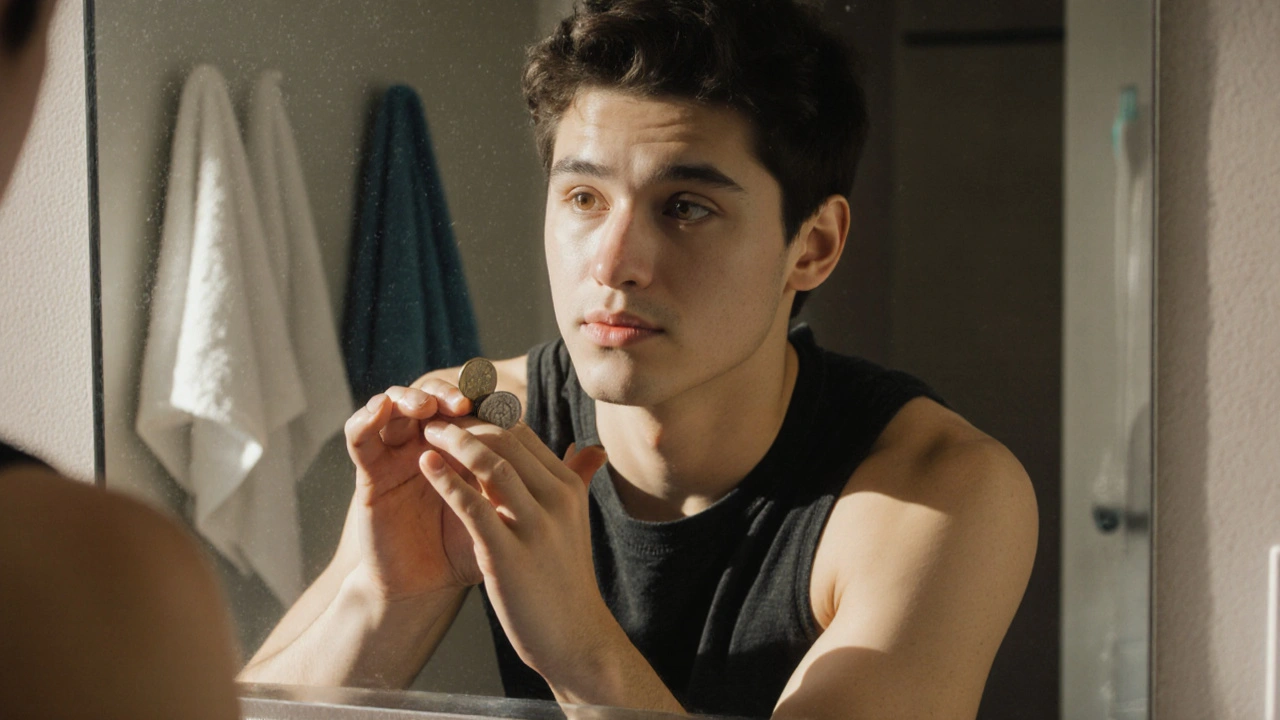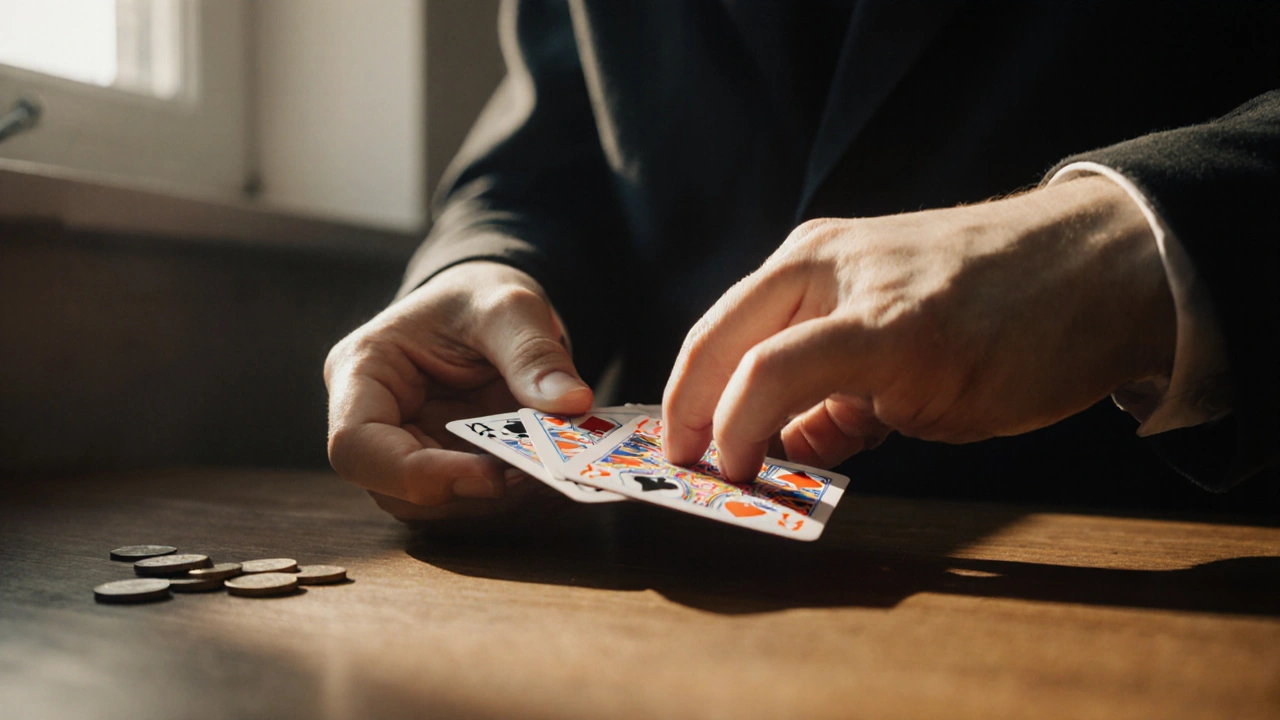Everyone’s seen a magic trick. The card that vanishes. The coin that appears behind the ear. The assistant cut in half and walking away unharmed. But have you ever wondered what it feels like to be the one holding the secret? Not just watching it-doing it. Magic isn’t about supernatural powers. It’s about timing, misdirection, and practice. And anyone can learn it. You don’t need a cape, a top hat, or a stage. You just need a deck of cards, a few coins, and the willingness to mess up a few times before it looks perfect.
Why Magic Tricks Work (And Why You Can Do Them)
Most people think magic is about sleight of hand. It’s not. It’s about how your brain works. Your eyes follow movement. Your mind fills in gaps. Magicians exploit that. When you see a card fly across the room, you’re not seeing magic-you’re seeing your own attention being pulled away from where the real action happens.
Studies in cognitive psychology show that even experienced observers miss obvious changes when their focus is directed elsewhere. This is called inattentional blindness. Magicians use it every day. A flick of the wrist, a joke, a sudden glance to the left-those aren’t distractions. They’re tools. And once you understand how your brain gets tricked, you can start building tricks that fool others.
You don’t need to be a nimble-fingered prodigy. Most beginner tricks rely on simple mechanics. The double lift? It’s just lifting two cards like one. The pass? It’s switching a card from the top to the bottom without anyone noticing. These aren’t complex. They’re repeatable. And with practice, they become second nature.
Three Beginner Magic Tricks You Can Learn Today
You don’t need a $200 kit to start. All you need is a standard deck of playing cards. Here are three tricks that work, even if you’ve never held a deck before.
- The Force - This is the foundation of almost every card trick. You make someone think they chose a card freely, but you control which one they pick. Here’s how: Spread the cards face down. Ask them to pick one. As they reach, subtly press your thumb on the card you want them to choose. Most people will pick the card that feels easiest to grab. Practice this until you can do it without looking. Once they pick, you know exactly which card they chose.
- The Rising Card - Place a card face down in the middle of the deck. Hold the deck in both hands. With a quick flick of your thumbs, push the card up slightly. Then, slowly pull the top half of the deck away. The card will rise like it’s floating. The secret? You’re using a small rubber band or a strip of tape on the back of the card to catch the deck as you pull. It’s invisible to the audience. Try it with a rubber band wrapped around the card’s edge. You’ll be amazed how simple it looks.
- The Coin Vanish - Place a coin on your palm. Close your hand. Now, open it. The coin is gone. How? You palmed it. That means you secretly held it in your fingers while pretending to open your hand. To do this, rest the coin on your thumb pad. As you close your hand, curl your fingers slightly and let the coin roll into the space between your thumb and index finger. When you open your hand, your fingers stay closed just enough to hide it. Practice in front of a mirror until your hand looks completely natural.
These tricks take less than 15 minutes to learn. But they take weeks to perfect. Don’t rush. Do each one 20 times in a row before moving on. Record yourself. Watch where you hesitate. That’s where the audience will notice too.
What to Avoid as a Beginner
Most beginners make the same mistakes. They’re eager to impress. So they try flashy tricks with gimmicks-cards with magnets, gimmicked decks, invisible threads. These might work once, but they’re unreliable. And worse-they teach you bad habits.
Here’s what to skip:
- Tricks that require special props (unless you’re ready to master the basics first)
- Tricks with loud sound effects or music cues (they distract from your control)
- Over-explaining how it’s done (if you say, “Watch closely,” they’ll stare at the wrong place)
- Performing for friends who know you’re learning (they’ll spot every slip)
Instead, focus on three things: smoothness, confidence, and silence. Your hands should move like they’ve done this a thousand times-even if they haven’t. Speak calmly. Don’t rush. Let the trick breathe. Magic thrives in quiet moments.

How to Practice Like a Pro
There’s no magic shortcut. But there is a better way to practice.
Start with 10 minutes a day. Not an hour. Ten minutes. Do one trick. Repeat it. Then do it again. After 10 days, you’ll have done it 100 times. That’s enough to make it feel natural.
Use a mirror. Watch your hands. Are your fingers stiff? Do you glance at the deck too often? Are you smiling nervously? Those are tells. Fix them. Record yourself on your phone. Watch it later. You’ll cringe. That’s good. Cringing means you’re seeing what the audience sees.
Practice in different environments. At home. In the car. On the couch. In front of a pet. Pets don’t care if you mess up. They’re perfect audiences. Then try it on someone who doesn’t know you’re practicing. A cashier. A barista. Someone who won’t give you feedback. Just watch their face. If they blink, lean in, or say “How did you do that?”-you’ve succeeded.
The Real Secret: It’s Not About the Trick
The best magicians aren’t the ones with the most complex moves. They’re the ones who make you forget you’re watching a trick at all. They tell a story. They pause. They smile. They make you feel like you’re part of something special.
That’s why the same trick can feel incredible in one person’s hands and boring in another’s. It’s not the mechanics. It’s the presence.
So when you practice, don’t just rehearse the moves. Rehearse the moment. What’s the setup? What’s the payoff? What emotion do you want to leave them with? Wonder? Amusement? A little disbelief?
Think of magic not as a performance, but as a gift. You’re giving someone a moment where logic breaks down. Where the impossible feels real. That’s powerful. And it’s yours to create.

Next Steps: Where to Go From Here
Once you’ve mastered the three tricks above, here’s how to keep growing:
- Learn one new trick every two weeks. Stick to card and coin tricks-they’re the foundation.
- Watch magicians like David Blaine, Dynamo, or Ricky Jay. Not to copy them, but to study how they hold attention.
- Join a local magic club. Many cities have groups that meet monthly. Asheville has one that meets at the River Arts District. You’ll find people who’ve been doing this for years. They’ll help you improve.
- Perform for strangers. Start small. A coffee shop. A park bench. A family gathering. Each time, ask yourself: Did they feel something? That’s the goal.
Don’t wait until you’re perfect. Start now. Even if you’re clumsy. Even if you drop the coin. Even if you laugh when it doesn’t work. That’s part of it. Magic isn’t about being flawless. It’s about being human-and still making the impossible feel real.
Do I need special cards or props to start learning magic tricks?
No. You can start with a standard deck of playing cards and a few coins. Most beginner tricks rely on simple techniques like palming, forcing, and misdirection-not gimmicked gear. Avoid gimmicked decks or special props until you’ve mastered the basics. They can make you rely on tools instead of skill.
How long does it take to get good at magic tricks?
You can perform a convincing trick in under a week with daily 10-minute practice. But becoming truly smooth takes months. Most pros say it takes about 100 repetitions of a single move before it looks effortless. Focus on mastering one trick at a time. Quality beats speed.
Can kids learn magic tricks too?
Absolutely. Many top magicians started as kids. Simple tricks like the coin vanish or card force are perfect for children. Magic builds confidence, focus, and communication skills. Just make sure the tricks are age-appropriate-avoid anything requiring fine motor skills that haven’t fully developed yet.
Why do magic tricks fail even when I do them right?
It’s usually not the move-it’s the delivery. If you look nervous, rush through the steps, or explain too much, the audience catches on. Magic lives in silence and timing. Practice your pacing. Pause after the reveal. Let the surprise sink in. Your confidence matters more than your technique.
Is magic just about deception?
Not really. Magic isn’t about tricking people into believing something false. It’s about creating a shared moment of wonder. The audience knows it’s not real-they just want to feel like it could be. That’s why the best magic feels personal, not mechanical. It’s storytelling with your hands.
Final Thought: The Magician Is Already Inside You
You don’t need to be born with talent. You don’t need to be lucky. You just need to show up. To try. To fail. To try again. Magic isn’t hidden in rare skills or expensive gear. It’s hidden in the quiet moments of practice, the patience to repeat, and the courage to perform even when you’re unsure.
The magician you’re looking for? They’re already there. You just have to let them out.


Aimee Quenneville
November 18, 2025 AT 04:19Cynthia Lamont
November 18, 2025 AT 07:57Marissa Martin
November 19, 2025 AT 06:59James Winter
November 21, 2025 AT 04:27Kirk Doherty
November 21, 2025 AT 18:06Dmitriy Fedoseff
November 23, 2025 AT 09:54Meghan O'Connor
November 24, 2025 AT 07:06Morgan ODonnell
November 24, 2025 AT 20:52Liam Hesmondhalgh
November 24, 2025 AT 22:21